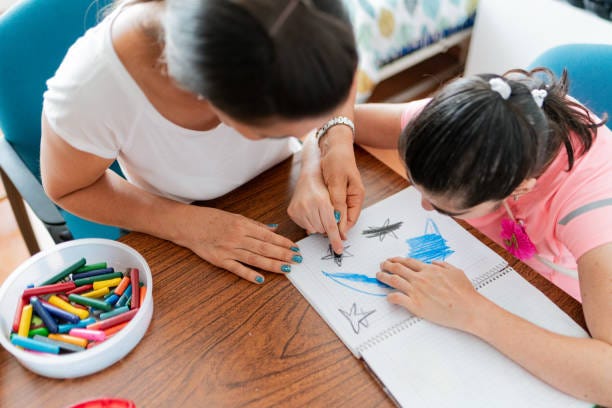When I began writing about relearning math, it was because of MANY adults I encounter daily who say things like,
“I’m just not a math person”
“You do this—I can’t do math”
“I’m terrible at math”
These comments come from needing to do relatively simple tasks—finding percents, adding things together, multiplying. And, half the time, they already have the calculator app pulled up on their phone. The issue wasn’t actually about knowledge, but confidence.
Having taught middle school and high school math for many years, I’ve noticed most students came to my class having already decided how successful they were likely to be, despite the amount of effort they were willing to give. The ones who were willing to talk about themselves and their perceptions of their abilities all fell into a few categories: either the had difficulty memorizing multiplication facts, or they had difficulty with fractions. There are plenty of other math concepts they may have struggled with, but these were the two that really solidified their feelings.
The thing is, these topics are covered in third through 5th grade. So, adults who think they are bad at math have felt that way for the majority of their lives, sometimes going back to being 8 years old (or younger if they are neurodivergent or have a learning difference). If I want to encourage people to reclaim what they should have learned, we have to go all the way back to that frustrated 8 year old, which leads to inner child work and reparenting.
Because I’ve been writing and thinking about inner child work and reparenting, in generally, I’ve naturally started to think about how it might apply to my own life. When I’ve read about reparenting before, most of what I’ve read has been very surface level with dumb examples/suggestions.
hAvE fUn AnD cOlOr In A cOlOrInG bOoK
It never really made sense to me…but I think it’s because I did a lot those kinds of things as a kid—we always had crayons in the house, we always had coloring books or at least paper to draw on, we always had random toys and things to play imaginatively with. We even had the occasional refrigerator box (IYKYK). We didn’t have the latest and greatest, but we always had collective imaginations which led to a lot of fun times.
The more I thought about it, though, things started to come up. I started to think about some of the disappointments from my childhood—some of which came from things my family wasn’t legitimately able to do (like going to Disney for spring break…or going anywhere for spring break most years), some of which came from things that I assumed I wouldn’t be able to do so I never actually asked, and some things I was afraid to even try (cue doechii).
The wonderful thing about life is, it’s never too late to do some of these things. As George Eliot once said, “It’s never too late to be what you might have been.” I think about people like Jonathon Van Ness who takes gymnastics classes as an adult. Will they ever go to the Olympics? Obviously not, but they are doing something for the pure joy of it.
So, I’m challenging myself to come up with a list of all the things I was afraid to try in childhood but wanted to. I have a few things in mind, but I need to think deeply about what would be the most meaningful to me, what should I try first. I still have some anxiety that creeps up that I will need to work through. But, what if, I fully embraced joy? What if I worked past my anxiety to try something I’ve always wanted to do? What if I modeled to my own kid that it’s safe to try new things?
Wonderfully, this invitation is not open to just me. It is open to us all.
What are things you wanted to do as a child that you can intentionally try as an adult?
What are ways you can embrace joy wholeheartedly?
How can you create the life you’ve always dreamed of?




